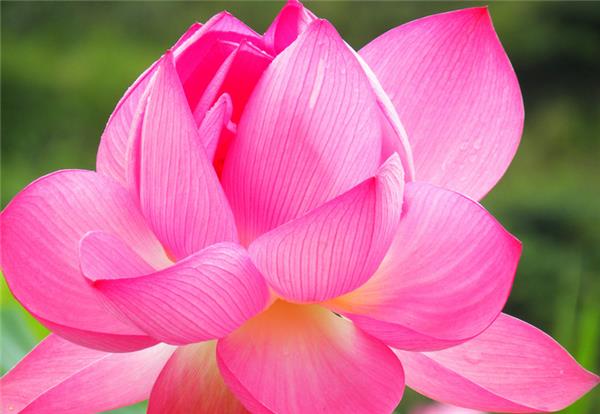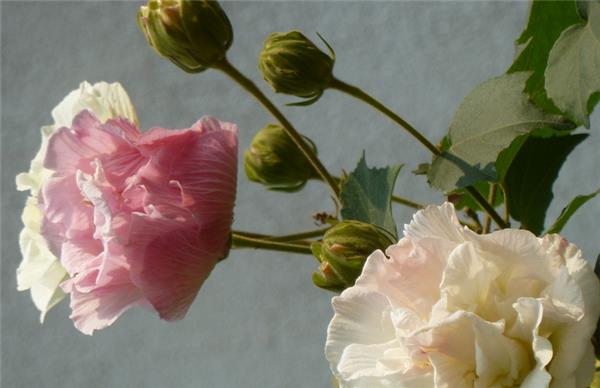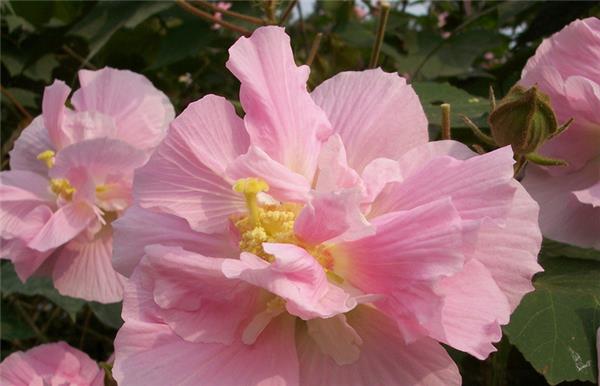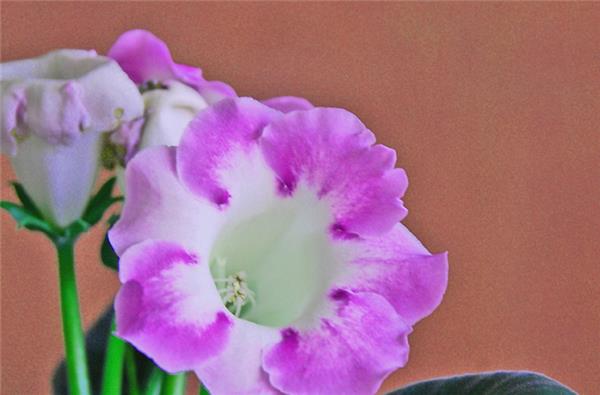[culture technology of hibiscus flower] how to culture hibiscus flower
Hibiscus has a long flowering period, many varieties and colorful flowers, so it is a good ornamental tree species, and the flower color will change with time, which is of great ornamental value. Next, let's take a look at how hibiscus flowers should be cultivated.

I. Culture techniques of hibiscus flower
The main results are as follows: 1. The biological characteristics of hibiscus flowers are that they like sunny, warm and humid climate and are not tolerant to drought. It is suitable to be planted in sandy loam with good drainage.
2. Cultivation techniques of hibiscus flower: cutting, dividing plants and sowing and propagating. Cuttings are often used in production: in warm climates, cuttings are cut directly from the mother plant from February to March and cut as they go. In the cold climate area in winter, the branches were cut from September to October, stored in cellar, and removed from March to April of the following year. The cuttings were cut into 17-20cm cuttings and inserted directly into the planting hole with 2 3-4cm in each hole. The ground was watered thoroughly and covered with rotten leaves of subtilis, and 1 seedling was left in each hole after survival. Ramet propagation: before sprouting in spring, dig the plant clump, divide and sprout, and transplant with root. Sowing and propagation: the ripe fruit was picked in November-December, dried and threshed in the sun, then dried and stored, sowed and raised seedlings in March-April of the following year, the seeds were evenly sown in the ditch according to the row spacing 20-25cm, thin cover fine soil, and then covered with grass, and the seedlings emerged in about 15 days. Seedling height is about 7cm time seedling, 16-17cm time seedling, plant distance 10-12cm. The seedlings can be planted in the nursery after raising seedlings for 1 year.
3. Field management of hibiscus flower: after the plants were planted, the plants were ploughed and weeded once a year in summer and winter, and the soil was properly cultivated in winter, combined with ploughing and topdressing for 3 times. Human and animal dung water or chemical fertilizer is mainly applied in spring and summer. After flowers are harvested in autumn and winter, holes or annular ditches are opened next to the plant, and compost, barnyard manure or garbage compost are applied.

2. Culture methods and matters needing attention of hibiscus flower
1. Temperature
Hibiscus likes a warm, humid and sunny environment, slightly resistant to semi-shade, and has a certain degree of cold resistance. Winter moved to the indoor winter, maintaining a temperature of 0: 10 ℃ to ensure its dormancy.
2. Soil
It is not strict with the soil, but it grows best in the rich, moist and well-drained sandy soil. It can be planted in the sunny part of the courtyard or by the pond.
3. Water and fertilizer management
Usually the management is relatively extensive, pay attention to watering during drought, ditch and apply some mature organic fertilizer around the plant every winter or spring, and water and seal the soil in time after fertilization. Some shoots of plants planted in cold areas will freeze to death in winter, don't worry about it, and new branches will come out when the temperature warms up in spring.

III. Disease and insect control of hibiscus flower
Drosophila melanogaster
It can be sprayed twice with 80% dichlorvos EC 500 times 900 times or 50% fenitrothion EC 1000 times.
Aphids
You can use dimethoate or omethoate 1000-1500 times or 2.5% fish rattan essence 1000-1500 times, spray once every 7 days, 2 times 3 times.
Red spider
You can use 20% diclofenac 800x, triclofenac emulsion 2000 times, spray once every 7 days, 2 times 3 times.
Mulberry powdery mildew
It mainly harms the leaves, and when the damage is serious, it can cause plant weakness, leaf yellowing and early withering. In the early stage, there were several small spots on the front of the leaves, and then the small spots were synthesized into large powdery spots with no obvious edges, and small black-brown particles were produced at the end of autumn.
Control methods: remove the diseased plants and burn them at the end of autumn; spray with 2000 times of 25% trimethoprim at the initial stage of the disease, or 1500 times of 70% methyl topiramate wettable powder.

Hibiscus flowers in addition to outdoor planting, can also be potted, it is suggested that potted hibiscus flowers need to choose a larger porcelain pot, pot soil to ensure drainage and fertility, ensure enough water, potted hibiscus flowers can be cultivated in the greenhouse, more economic value.
Related
- Wuhan Hospital Iron Tree Blooming Result Was Instantly Frightened by the Gardener Master
- Which variety of camellia is the most fragrant and best? Which one do you like best?
- What is the small blue coat, the breeding methods and matters needing attention of the succulent plant
- Dormancy time and maintenance management of succulent plants during dormancy
- Minas succulent how to raise, Minas succulent plant pictures
- What are the varieties of winter succulent plants
- How to raise succulent plants in twelve rolls? let's take a look at some experience of breeding twelve rolls.
- Attention should be paid to water control for succulent plants during dormant period (winter and summer)
- Watering experience of twelve rolls of succulent plants
- Techniques for fertilizing succulent plants. An article will let you know how to fertilize succulent plants.



